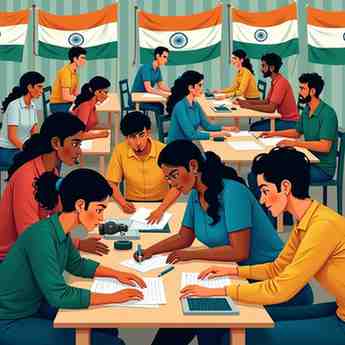
India is implementing a wide-able reform of Vocational Education and Training (VET) as the country also faces a critical skills gap. Although there is an extensive network of more than 14,000 Industrial Training Institutes (ITIs), this system is characterized by low enrolment rates as only 48 percent of the sanctioned seats are filled and only 63 percent of the graduates finding employment.
The Main Problems of the existing System
The current system interferes with vocational training at a late stage after high school education and thus, it is not a very appealing prospect compared to academic programs. There is no professional route through which VET graduates can advance to higher education and as such this discourages many students. Moreover, courses are frequently of old fashion, fail to respond to industry demands, lack teaching staff and evaluation of quality.
Global Models Learning
The reform finds inspiration in useful overseas examples such as Germany and Singapore. These systems have early integration of training, combine schooling with paid apprenticeships and have good academic progression. They are also distinguished by an industry-driven curriculum, highly qualified teachers and the heavy adult participation of industry in the development of curricula and close collaboration between governments and the industry (10-13 per cent of education budget, compared to 3 per cent in India).
Reform Suggested Course
Among the main recommendations, there is the fact that startups should maximize their innovative potential and be creative and innovative.
- Early Integration: This is introducing vocational skills to children at an early age of their studies as it is recommended by the National Education Policy 2020.
- Academic Mobility: Putting the National Credit Framework into practice so that credit transfers can be effected and VET graduates given access to higher learning.
- Industry Alignment: connecting local industries and MSMEs in the development of curricular and scaling up the partnerships between the government and industries.
- Quality and Finance: Improving instructor quality, post-qualification ITI audits with feedback of trainees and more available funding based on the performance.
Many recent government initiatives on ITI Upgradation Initiative address this area on infrastructural front, however a thorough systemic reform is necessary to make a real impact on employability and getting the Indian youth ready to take on the challenges of future job market.
Month: Current Affairs - August 26, 2025
Category: current affairs daily